
How can supervision support your organisation?
One of the biggest challenges I come across when talking with senior leaders and business owners is the ability of their managers to consistently perform at their peak.
The organisations have invested thousands of pounds in training and development but often wonder why they are not seeing the investment turn into high performing teams and individuals.
One client mentioned to me that she had invested in training and development and had also initiated a coaching support programme for the new managers. This appeared to work well at first however a year or so later, she did not feel the organisation had seen the improvement she had imagined or that had been intimated as being attainable by the training and development team.
The challenge appears to be how to make the change sticky and sustainable over the long haul. How can they ensure great management practice is the norm? How can the managers consistently deliver at peak performance?
This got me thinking of how we address this within coaching, where the vast number of professionals across the globe are committed to being lifelong learners and actively practice continual improvement of practice. The aim of CPD is to support the coach operate consistently and on a journey of continual improvement.
For those of you who are involved with social care work, psychotherapy, counselling, and coaching you are probably familiar with supervision within the context of your own support and development.
According to the Scottish Social Service Council: visit
“Supervision is a process that involves a manager meeting regularly and interacting with worker(s) to review their work. It is carried out as required by legislation, regulation, guidance, standards, inspection requirements and requirements of the provision and the service. The purpose is to monitor tasks and workload, solve problems, support workers in dealing with complex situations and moral and ethical dilemmas and to promote staff development.”
“Supervision aims to provide accountability for both the supervisor and supervisee exploring practice and performance. It also enhances and provides additional evidence for annual performance management and review. Supervision has a particular focus on developing the supervisee in a way that that is centred on achieving better outcomes for people who use services and their carers.”
Within my own discipline as an executive coach I enjoy supervision as a method of enhancing my coaching and mentoring skills. It is expected as part of my professional membership and provides me with three primary facilities:

The role of the supervisor in coaching
Supervision within coaching is a method and process to help coaches who are working on a 1:1 or group basis and provide a formal opportunity to share, in confidence, their case load activity to gain in sight, support and direction for themselves and thereby enabling them to better work in the service to their coachees.
It is an opportunity for those who are coaching to build and improve on their coaching skills and as such become better coaches. It can form part of continuous professional development (CPD), help self-guard their wellbeing (and that of their coachee’s) and finally act as a process of quality assurance for the organisation that coaching is being used to good effect and in a fair and equitable way.
This process has served professional service providers well for many years and is fundamental as a requirement for most accredited coaching programmes globally.
Professor Peter Hawkins has written extensively about taking a more systemic approach to coaching practice and I wrote in my own blog here about the advantage of taking coaching from a 1:1 focused engagement and consider the coachees challenges in a wider context.
Coaching supervision supports coaches to widen their perspective by considering the systemic effect of their client’s decisions and actions. It can be illustrated as such:
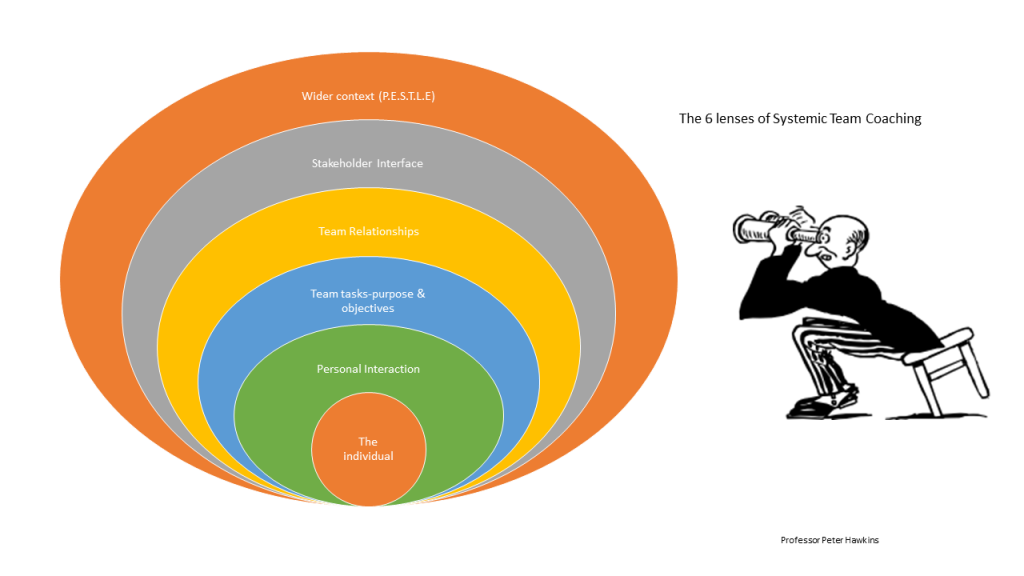
The advantage of the supervision interaction is to support the coach to consider a wider view of what’s going on. Ensuring they can probe deeper if necessary, in subsequent interactions and in turn help their client to consider a wider perspective on their reflective practice.
The case for supervision to support managers.
So, if this technique is working well for the support service and has been part of good practice for over 40 plus years, I wonder why the solution is not used more within the world of management and management development?
Supervision delivers on several fronts as mentioned, and if used effectively can help an organisation deliver on its aims of having consistently high performing managers that think wider then just the direct challenges faced by their respective teams.
Why might this be necessary?
Let us consider the function and tasks associated with our modern managers and leaders. It is a complex process, and this can be highlighted by some examples of what modern management consists of.
The modern manager needs to be able to lead their team, manage their direct reports, be able to interact with wider stakeholders both inside and outside of the organisation which in turn demands fantastic communication skills and the ability to build effective and professional relationships.
They require financial, operational and project management skills as well as an ability to manage and cope with their own life demands. It goes without saying they need to be highly self-motivated to do so and in good health and spirit.
The modern manager should be able to take responsibility, step up to the challenge, be agile and be able to manage the stress that will inevitably come with the role. They need to be a professional ambassador for your organisation.
According to the Chartered Management Institute (CMI) the following is a list of skills an employer is looking for from the modern manager.
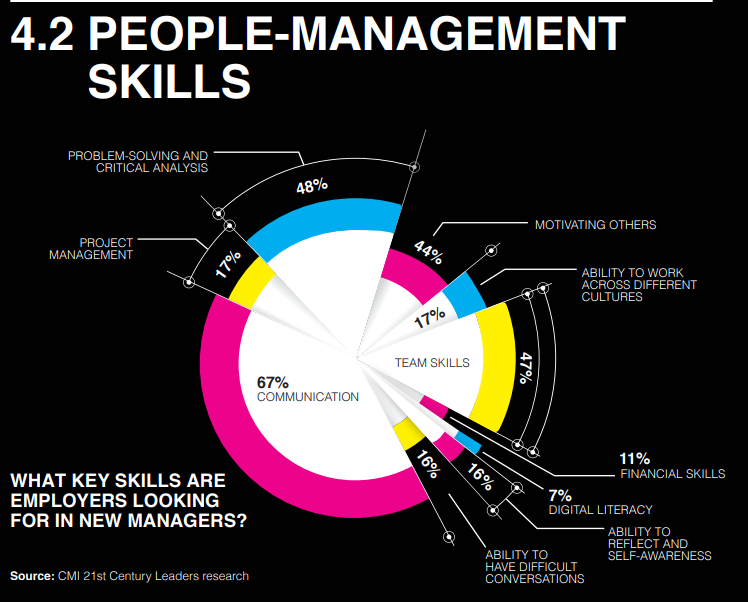
John P Kotter, author and Professor at Harvard Business School listed the role of a manager and the role of a leader as consisting of the following:
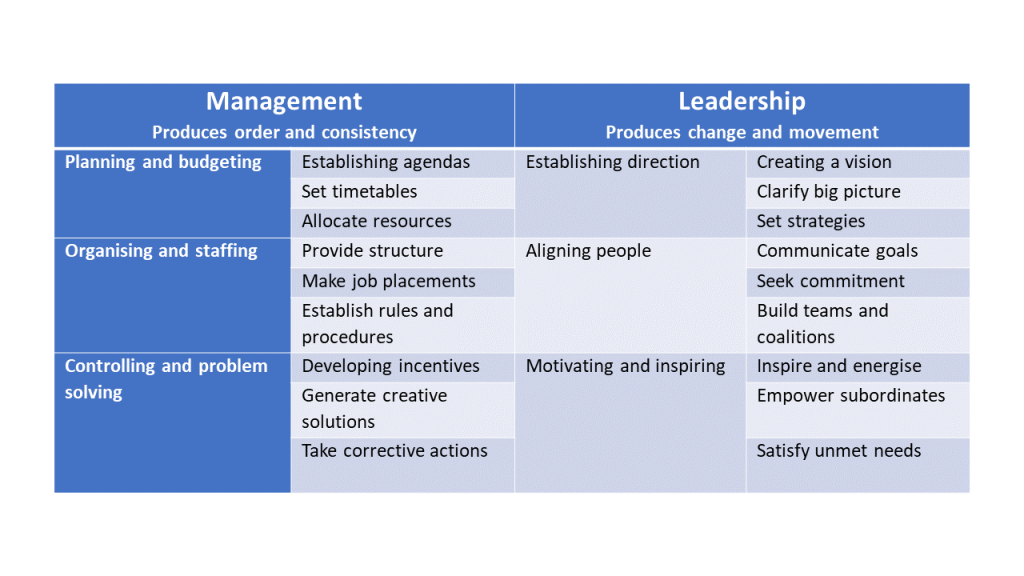
In his book The Next Level: What Insiders Know About Executive Success, Scott Eblin considers Personal Presence, Team Presence and Organisational Presence as three core traits that great modern leaders portray. I posted blogs here ,here and here recently on his work but in short, Eblin brings in an additional layer of complexity over and above the skills factor when he explains about the importance of presence of a leader.
Clearly, there is a lot to consider when we explore how effective our managers are. There is a clear case for ensuring we train all our managers and leaders to deliver on the modern work place needs.
The development of our managers has progressed in most instances from classroom-based training and embraced work-based learning methods that have been influenced by the works of people like Malcolm Knowles (The Adult Learning Theory – Andragogy), David Kolb’s Experiential Learning and Jack Mezirow’s Transformative Learning.
The concept of action-based learning supports the learner when that take their new-found knowledge into the work place and practice, practice, practice. Take a look at an earlier blog I presented here for our own views on work-based learning. Or visit the Spark page https://spark.adobe.com/page/KnrKxRUwlrczT/
The investment in coaching services can help support the learner through a change process, helping the learner apply their knowledge and reflect on how it is going.
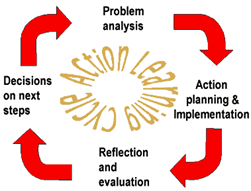
With our new managers we can support their learning with coaching and mentoring interventions. This process may extend into our senior leaders where Mezirows transformational learning techniques support change rather than skill-based development of newer managers.
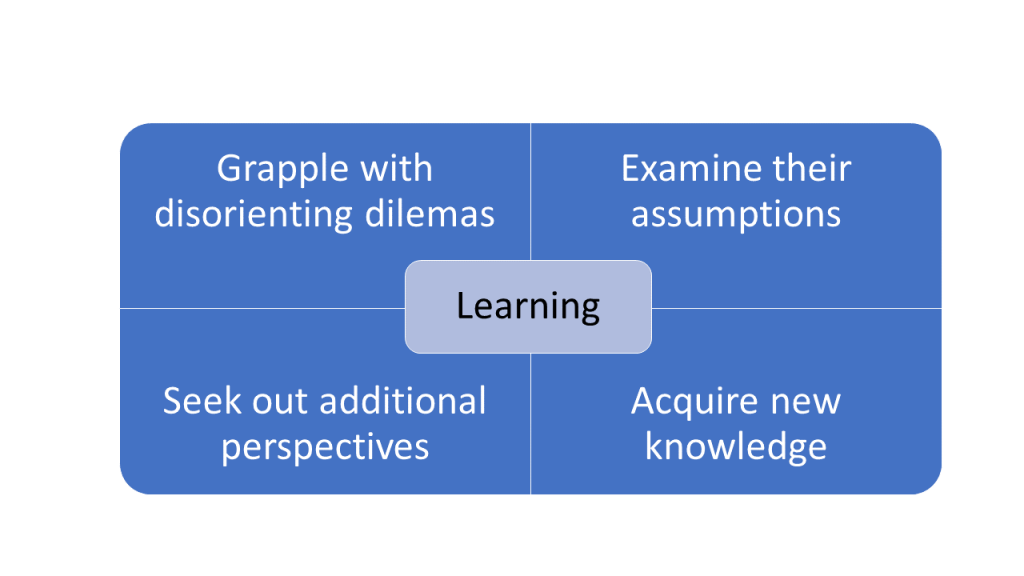
This style of intervention supports senior management change in terms of their attitude and their ability to switch from past mental models that have served them well and adopt new methods of working that might be more conducive for senior leadership in the 21st century.
The coaching support generally will stop once the manager believes they have taken the specific change/ improvement process as far as they wish, or when the budget runs out.
Ensuring the changes and performance enhancement provided by the earlier intervention is sustained is the on-going challenge we eluded to at the start of this blog.
So how can supervision help deliver on these challenges? How can it ensure that once a manger has the ability and knowledge to effectively manage, that they can consistently deliver to their teams at their peak?
Linking supervision to supporting your managers
Taking the concept of a trained, professional supervisor who can support your line managers to consider their practice might provide a solution.
This is a different relationship than a line manager supporting their team, this combines the experience of a trained supervisor providing regular support and guidance but without the direct authority that might hamper the relationship that is part of a line managers role.
Areas identified for improvement and challenges around delivering consistency can be raised by the manager without fear of being penalised or downgraded if a performance incentive is in operation.
The intervention is not directly linked back to performance in a negative perspective and the feedback is provided in a spirit of supporting the individual. How can we help the manager think better? How can the manager improve their impact on their team? How can we help the leaders create the space for their own teams to be successful?
The sessions respect the client supervisor relationship based on mutual respect, trust and none judgemental in feedback.
Where the supervisor is supporting several managers, perhaps from one or several different divisions of an organisations, the continuity of the supervisor enables them to spot recurring patterns or models of behaviour that might not get spotted within the standard up/ down management process and annual appraisals. Supervision as a process can provide a left, right and diagonal view of what is happening.
Without compromising the confidentiality, the supervisor can often observe and share specific information that help highlight specific areas where a value contribution has been made thus helping justify the investment made on development. This can be reported back to the L&D or board.
Their role will extend to ensuring quality of delivery is maintained, holding their client to account and sharing opportunities for improvement.
Supervision can be the stimulant for continual improvement of management practice within the organisation. It can act as the support for embedding change where such change initiatives are preferred.
Benefits to the organisation.
- Promotes best-practice in the workplace.
- Gives organisations confidence their staff are practicing safely and
- ethically.
- Encourages a positive culture.
- Increases employee skills in decision-making and problem solving.
- Reduces staff turn-over.
- Enhances professional development.
- Can help evidence ROI on staff development
- Stimulates and supports change initiatives.
I wonder if others have experience of widening the use of supervision to support management and other professional service providers that they can share with the readers?
Your thoughts are more than welcome.
